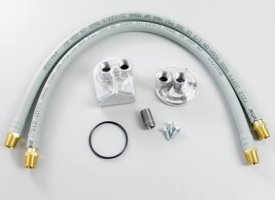u079721
Contributing Partner
I came across this suggestion in the Dashew blog that I though might be of interest to most Ericsonians.
http://setsail.com/changing-horizontal-oil-filters/
They point out what a mess it is to change a horizontal oil filter - something all of us Universal engine owners would certainly agree with. My solution (which works pretty well) was to wrap a zip-loc bag around the filter and hold the opening up close to the engine, then use the filter wrench on the outside of the bag to remove the filter inside the bag - which would usually catch just about all the drips.
The Dashew suggestion is to just poke a hole in the end of the filter, with an air hole above, to let most of the oil drain out into a cup. I guess I might worry about putting a strain on the threads as I poked the hole, but it could be worth a try.

http://setsail.com/changing-horizontal-oil-filters/
They point out what a mess it is to change a horizontal oil filter - something all of us Universal engine owners would certainly agree with. My solution (which works pretty well) was to wrap a zip-loc bag around the filter and hold the opening up close to the engine, then use the filter wrench on the outside of the bag to remove the filter inside the bag - which would usually catch just about all the drips.
The Dashew suggestion is to just poke a hole in the end of the filter, with an air hole above, to let most of the oil drain out into a cup. I guess I might worry about putting a strain on the threads as I poked the hole, but it could be worth a try.


